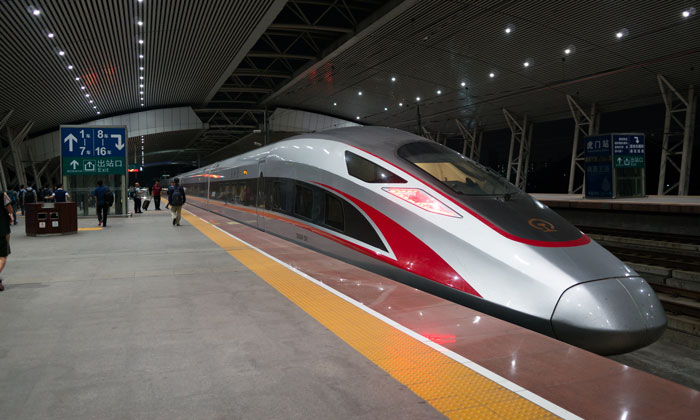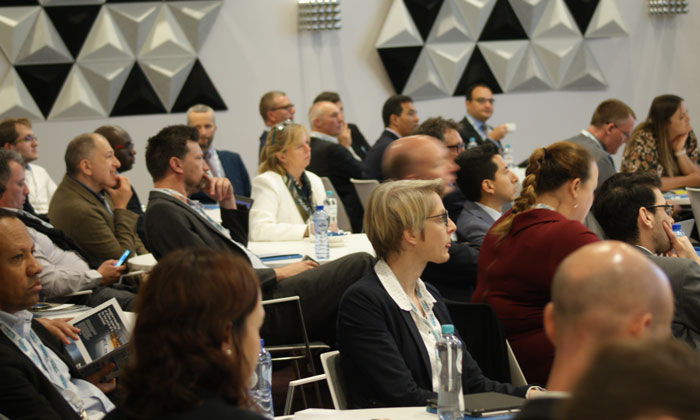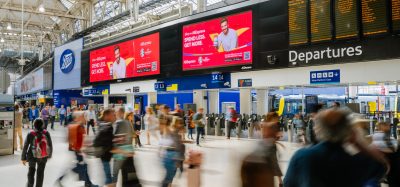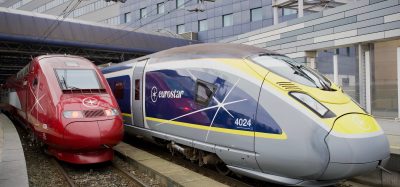International Rail Development speaker interview: Bassam Mansour
Posted: 4 June 2018 | Global Railway Review | No comments yet
Global Railway Review speaks to Bassam Mansour, International Rail Industry Advisor, to find out his views on competition within the rail sector, new digitalisation initiatives and what he believes are some of the biggest challenges facing the rail sector…




Taking place in Brussels on 22-23 May 2018, the successful International Rail Development conference brought together rail professionals and thought-leaders to discuss some of the biggest rail developments happening around the world. During the event, Global Railway Review sat down to interview one of the conference’s speakers – Bassam Mansour, International Rail Industry Advisor.
Rail faces growing competition from other modes of public transport, so what must the rail sector do to ensure it retains a large share of the future transportation market?
Mansour: Railway service providers can differentiate themselves from other modes of transport by offering consistently reliable timetables and provide more frequent and faster services.
Passengers don’t just travel on trains; they undergo an experience that decides whether or not this experience is repeated. Passengers appreciate convenience, comfort and a guaranteed seat during their journey, so care and respect of passengers’ needs is not only one yardstick to measure value-for-money, but it is a fundamental part of the marketing concept to satisfy passenger needs.
The rail sector must also continually develop and make best use of technology, such as the usage of free on-board Wi-Fi as part of the service offering to make the journey experience both useful and memorable.
It is necessary to recognise the changing working patterns and the use of flexi hours and part-time working. In this regard, train services should match these changes in working patterns.
Connectivity of the railway network to airports and ferry terminals will make them more distinctive and complementary to other modes. For instance, imagine the possible reduction in traffic jams on the roads, particularly M25 in Britain, if there is a direct rail link between the North and Heathrow Airport.
Acquiring and retaining market share of the land transport also depends on price leadership. Therefore, ticket prices must be worth it and compare favourably to other modes of transport.
To retain a market share, it needs a multitude of marketing strategies that are customer-focused.
How do you think the digital revolution will change travel patterns?
Mansour: We are moving towards digital railways and the digital revolution will have a far-reaching impact. For a start, the proliferation of mobile Wi-Fi enables passengers to be connected while they are travelling and keep in touch with their business and families continuously.
We all expect hotels and airport lounges to have functioning and fast Wi-Fi. Railway stations should be no different. Operators who denigrate or ignore these sought-for services are putting their business at risk. In fact, I think stations’ KPI should include availability of functioning and high-speed Wi-Fi and clients as well as regulators ought to enforce it.
Many metros, trams and monorails are adopting the concept of Communication Based Train Control (CBTC) which enables the possibility of driverless operations with reduced headways, hence, more ridership as a result of the enhanced throughput and effective use of transit fleets.
Digitalisation will support the maintenance of railway assets because modern equipment is now fitted with built-in self-diagnostic digital features that are remotely monitored from far afield; this makes assets more intelligent and mostly self-checking. Using digitalisation tools such as the Building Information Model (BIM) will simplify asset management and the maintenance function by making as-built records and system datasheets available at the point of need in 3D. Therefore, digitalisation is a sought-for value.
Each railway asset component can have a digital address or a code that can be tracked and monitored throughout its life-cycle, continuous hand-shake checking about the health and behaviour of the asset is a vital maintenance management tool.
Digitalisation will also impact other railway systems such as communications (for example, PIDS, PABX, PA systems, CCTV, video recording, electronic access systems and security), signalling systems and power supplies. The digital revolution introduces a serious new dimension to the design, operation and maintenance of modern railways. Adopting new digital technology is not guaranteed; you must want it to happen and that requires technical leadership guiding railway companies.


2018’s International Rail Development welcomed many professionals from within the railway sector
Do you agree that passenger expectations have changed over recent years and what element of rail travel do you think is most important for passenger satisfaction?
Mansour: Yes, I do. Passengers have become more aware of their rights, transport choices and also demanding the value-for-money they are entitled to. As I mentioned earlier, comfort, convenience, reliability, frequent and fast services are important to passengers as well as affordable ticket prices.
Passengers do care about how they travel and therefore how they are processed and seated is important. It will be very unfair to pay large sums of money for a peak period ticket, only to find that you can’t find a seat. Price skimming strategy for peak travel periods is most resented by passengers because they feel manoeuvred into accepting high price tickets, whereas low wage-earning passengers are squeezed out from using the railway during peak hours.
Passengers have a subconscious barometer that measures the ambience at the station including cleanliness, quality of the PA system, clarity of information available, legibility of the PIDS text and friendliness and helpfulness of the train operating companies’ staff. Bilingual language is important to help international passengers and tourists visiting the country. When you are delivering a service, it is vitally important that interface with passengers is correctly managed with empathy to make passengers’ journeys successful.
What is your ideal rail travel experience? How do you want to access tickets? What do you want from the on-board experience? What do you want stations to be like?
Mansour: My ideal travel experience was when I travelled from Zhuzhou to Guangzhou on China’s high-speed network. The train seats were very comfortable, the train cars wide and the ride was very pleasant with hardly any bumps. Most of all, the train was on time.
My recent Eurostar travel from London St Pancras to Brussels was also smooth from an operational point-of-view; it departed on time and I arrived at my destination on time. Passenger processing was good at both ends, however St Pancras was very congested and I could not find a seat in the waiting lounge. The ticket price was also on the high side – more expensive than air travel, though this may be because I travelled at short notice. The on-board Wi-Fi on the Eurostar was also not as good as I expect in terms of speed and connectivity and I have noticed there are large gaps between the train doors and platform edges at many stations which I thought was a safety hazard. Choice of food on-board was limited.
I expect stations to be a welcoming place; bright with visibility all-round, a good selection of restaurants, retail outlets and they must be clean and secure. I thought St Pancras station was a beautiful and a good example of place-making.
Related topics
Digitalisation, High-Speed Rail, Passenger Experience/Satisfaction, Wi-Fi








